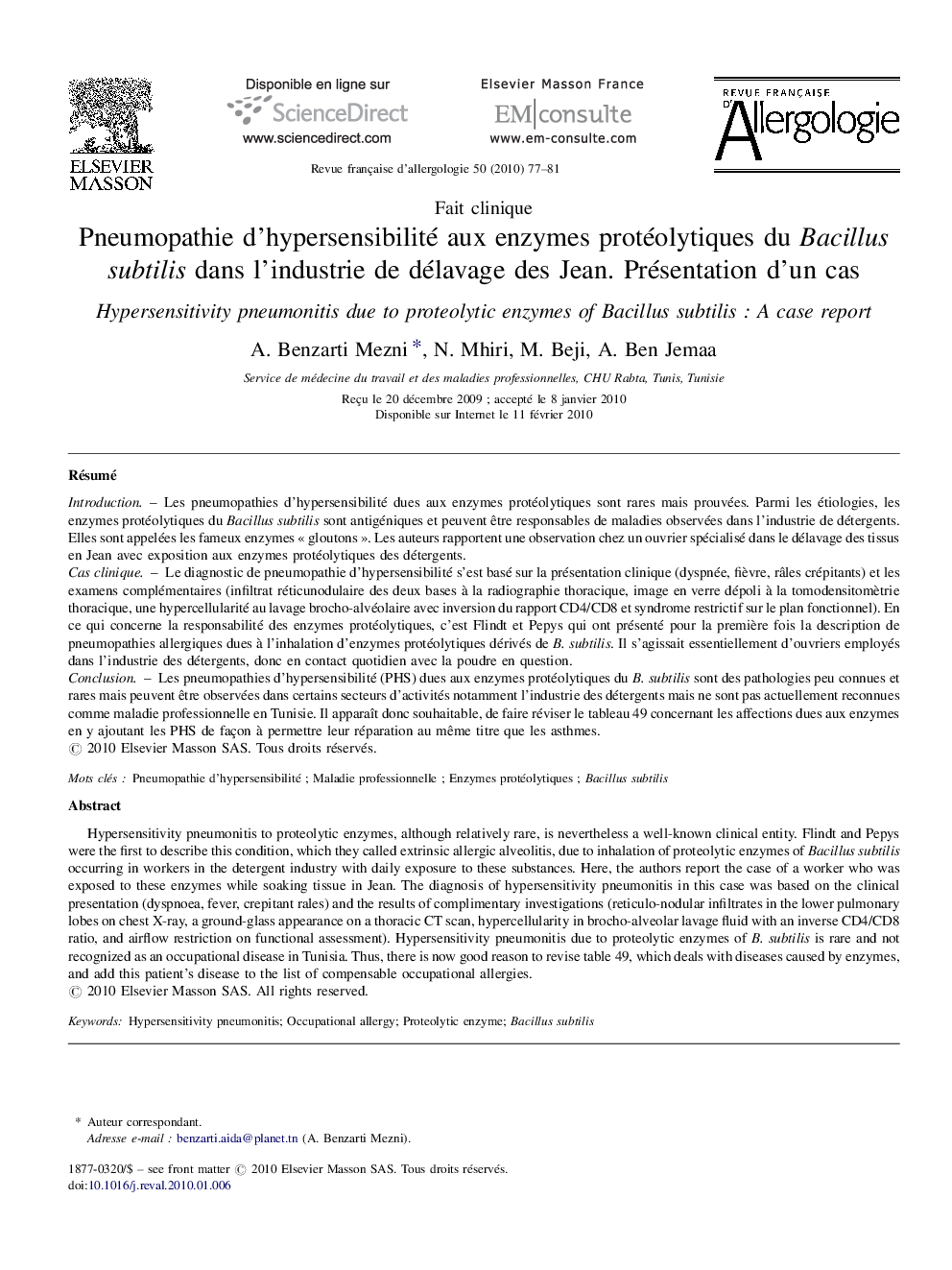| Article ID | Journal | Published Year | Pages | File Type |
|---|---|---|---|---|
| 3386752 | Revue Française d'Allergologie | 2010 | 5 Pages |
Abstract
Hypersensitivity pneumonitis to proteolytic enzymes, although relatively rare, is nevertheless a well-known clinical entity. Flindt and Pepys were the first to describe this condition, which they called extrinsic allergic alveolitis, due to inhalation of proteolytic enzymes of Bacillus subtilis occurring in workers in the detergent industry with daily exposure to these substances. Here, the authors report the case of a worker who was exposed to these enzymes while soaking tissue in Jean. The diagnosis of hypersensitivity pneumonitis in this case was based on the clinical presentation (dyspnoea, fever, crepitant rales) and the results of complimentary investigations (reticulo-nodular infiltrates in the lower pulmonary lobes on chest X-ray, a ground-glass appearance on a thoracic CT scan, hypercellularity in brocho-alveolar lavage fluid with an inverse CD4/CD8 ratio, and airflow restriction on functional assessment). Hypersensitivity pneumonitis due to proteolytic enzymes of B. subtilis is rare and not recognized as an occupational disease in Tunisia. Thus, there is now good reason to revise table 49, which deals with diseases caused by enzymes, and add this patient's disease to the list of compensable occupational allergies.
Related Topics
Health Sciences
Medicine and Dentistry
Immunology, Allergology and Rheumatology
Authors
A. Benzarti Mezni, N. Mhiri, M. Beji, A. Ben Jemaa,
